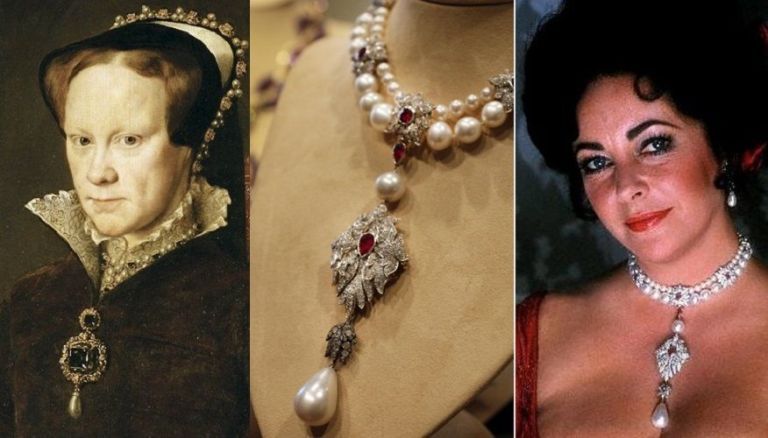
The world’s most famous pearl
Life Desk
Published:31 May 2021, 01:33 PM

The world’s most famous pearl
It was worn by kings and queens in paintings and eaten by Elizabeth Taylor’s puppy. Matthew Wilson traces a history of La Peregrina and of pearls in art.
It was spring 1969, and in the top-floor apartment of Caesar's Palace in Las Vegas, Elizabeth Taylor was in a blind panic. Her most beloved item of jewellery, a drop-shaped 25.5mm (1inch)-long natural pearl, which her husband Richard Burton had recently spent a fortune on, had vanished. The pearl in question – known as La Peregrina – was one of the most famous in world history, prized for its size, perfect shape and impressive provenance. Before Taylor owned it, La Peregrina had been owned by some of the most powerful dynasties in European history, and had appeared in portraits by artists including Peter Paul Rubens and Diego Velázquez. Taylor was on her hands and knees, scouring every inch of the suite's shag carpet, all to no avail. Then she noticed one of her Pekinese dogs dolefully chewing on something. “I just casually opened the puppy's mouth”, she wrote in her book Elizabeth Taylor: My Love Affair with Jewellery, “and inside his mouth was the most perfect pearl in the world.”
The picaresque life story of La Peregrina is one that opens a door on to the significant role pearls have played in human culture as signifiers of beauty, power and wealth. Photographs of Elizabeth Taylor often capture her passion for natural pearls. They became synonymous with glamour and fame in the 1950s and 1960s, worn by women such as Coco Chanel, Jackie Kennedy and Marilyn Monroe: the celebrity aristocracy of the 20th Century.
But the cultural significance of pearls goes far back in history: it is believed that the earliest evidence of pearl hunting comes from the 5000s BC in various sites on the coasts of the Indian Ocean. An obsession with them led to the formation of some of the world's oldest trade networks that linked the pearling centres on the coasts of India, Sri Lanka, the Persian Gulf and the Red Sea with the cities of the ancient world. They came to symbolise Aphrodite, the Greek goddess of love, who was believed to have been born from the sea. She is often represented emerging from a shell or wearing pearl earrings in Roman art, such as in Pompeiian frescoes dating from the 1st Century AD. A pairing of pearls and ideal beauty was forged very early in art history.
The real La Peregrina remained in the possession of the Spanish royal family until the early 1800s. In 1808 Napoleon invaded the country and put his brother, Joseph Bonaparte, on the throne. When the French were ousted from Spain in 1813, Joseph brought the pearl back with him to France and gave it to his sister-in-law Hortense de Beauharnais. It was then inherited by her son Charles Louis Napoleon Bonaparte, the future Napoleon III, President and Emperor of France in the mid-1800s.
When Napoleon III needed to boost his finances, he sold it to the English James Hamilton, Duke of Abercorn. Hamilton's wife, Louisa, reportedly suffered the same panic as Elizabeth Taylor, misplacing La Peregrina several times during society functions, including once between the cushions on a sofa in Buckingham Palace. It remained in the possession of the Dukes of Abercorn until it was purchased for $37,000 at auction by Richard Burton in 1969.
After retrieving it from the mouth of her Pekinese, it became one of Elizabeth Taylor's prized possessions. La Peregrina was to be immortalised in visual culture once again by appearing around Taylor's neck in various iconic photographs and films including Anne of the Thousand Days (1969). In December 2011, following Taylor's death, it was sold at auction for $11.8m (£8.4m) to an anonymous buyer.
On average, only one oyster in 10,000 will produce a pearl of moderate worth. The chances of producing one on the scale and flawlessness of La Peregrina are incalculable. Its name means “The Wanderer” and the odyssey of this marvel of nature, from the oyster beds of the Gulf of Panama through the hands of some of the most prestigious individuals in world history, is a reminder of what pearls have meant to different people over the course of time. Pearls aren't just an ornament; they also speak to us about imperialism, power, wealth, spiritual purity and our understanding of ultimate beauty.